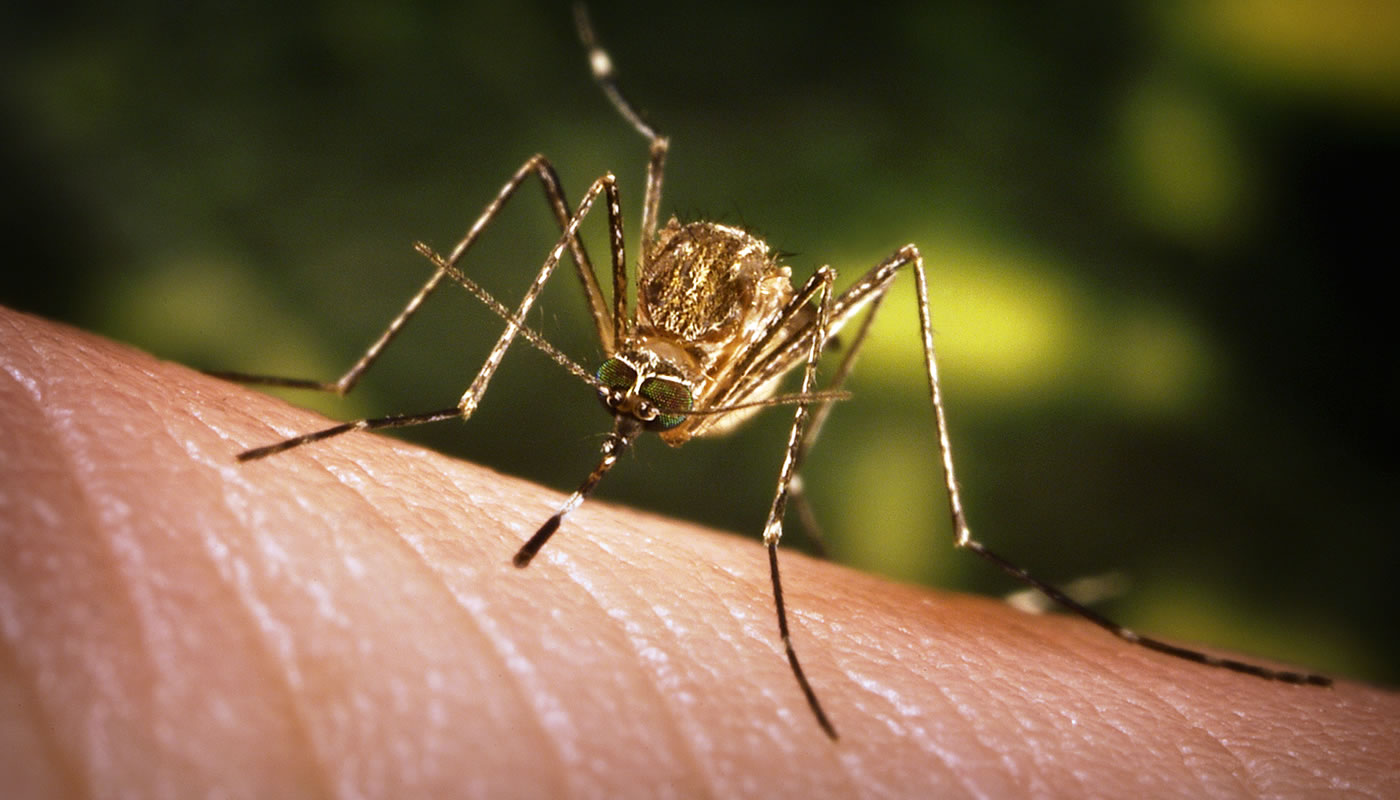Despite their reputation as a nuisance, mosquitoes play an important part in area ecosystems, providing food for insects, fish and other animals. However, some mosquitoes can carry pathogens that are harmful to humans.
On this page:
- Overview
- What is West Nile Virus?
- Preventing Mosquito Bites
- West Nile Virus Surveillance in Illinois
- Mosquito Abatement in Cook County
- Additional Resources
Overview
According to the Illinois Department of Public Health (IDPH) and Cook County Department of Public Health (CCDPH), two kinds of mosquitoes are common in Illinois, Aedes mosquitoes (floodwater mosquito) and Culexmosquitoes (house mosquito).
Floodwater mosquitoes will emerge about two weeks after heavy rains and can be a major nuisance problem for several weeks. A vicious biter, this mosquito will commonly fly 10 or more miles from where they hatch, particularly along prevailing winds. Floodwater mosquitoes have not been significant disease carriers in Illinois.
The house mosquito, the primary vector of West Nile virus, can breed in stagnant ditches, sewage treatment ponds, water in treeholes, old tires, clogged gutters, old tin cans and anything else that will hold water, such as children’s toys, flower pots and pet bowls. Eggs usually hatch within two to three days. Adult Culex mosquitoes do not fly far from where they develop and can “over-winter” in protected places, such as sewers, crawl spaces and basements.
What is West Nile Virus?
West Nile virus (WNV) is an infection that humans can contract from the bite of an infected mosquito. According to the IDPH, WNV was first identified in Illinois in September 2001.
Mild cases can cause slight fever or headache, while more serious infections can cause rapid onset of high fever with head and body aches, disorientation, tremors, convulsions and, in severe cases, paralysis or death. Symptoms typically occur from 3 to 14 days after the bit of an infected mosquito. Contact your primary healthcare provider if you are experiencing WNV symptoms.
Preventing Mosquito Bites
According to the Cook County Department of Public Health (CCDPH), prevention is the most effective way to protect yourself and your family from becoming infected with WNV:
- REDUCE exposure when mosquitoes are most active, especially between dusk and dawn.
- Get rid of standing water where mosquitoes can breed, such as pet bowls, flower pots, old tires, bird baths, baby pools and toys.
- Make sure rain gutters drain properly.
- REPEL mosquitoes when outdoors by applying insect repellent with DEET. Always follow label directions.
- REPAIR or replace torn or missing screens on doors and windows. Don’t invite mosquitoes into your home.
West Nile Virus Surveillance in Illinois
The IDPH has a surveillance system in place to monitor animals and insects that may carry the virus, including: crows, robins, blue jays, mosquitoes and horses. The IDPH updates surveillance data weekly on their website.
The Forest Preserves collects specimens on an annual basis and provides them to public health and research institutions, such as the IDPH and Centers for Disease Control and Prevention (CDC). Medical experts at these public health and research organizations analyze samples from the Forest Preserves and other agencies to help make decisions about managing WNV in our area and beyond, including outreach to the public and medical community.
Mosquito Abatement in Cook County
Mosquito abatement activities are carried out by one of four abatement districts covering suburban Cook County. The Forest Preserves aids these abatement districts by sharing observations and allowing access to Forest Preserves land for monitoring and abatement activities. For more information on mosquito abatement, visit your area’s abatement district website:
- Des Plaines Valley Mosquito Abatement District
- North Shore Mosquito Abatement District
- South Cook County Mosquito Abatement District
- Northwest Mosquito Abatement District
Additional Resources
- West Nile Virus – Centers for Disease Control & Prevention (CDC)
- West Nile Virus – Illinois Department of Public Health (IDPH)
- Mosquitoes – Illinois Department of Public Health (IDPH)
- West Nile Virus – Cook County Department of Public Health (CCDPH)
- West Nile Virus – Chicago Department of Public Health (CDPH)

